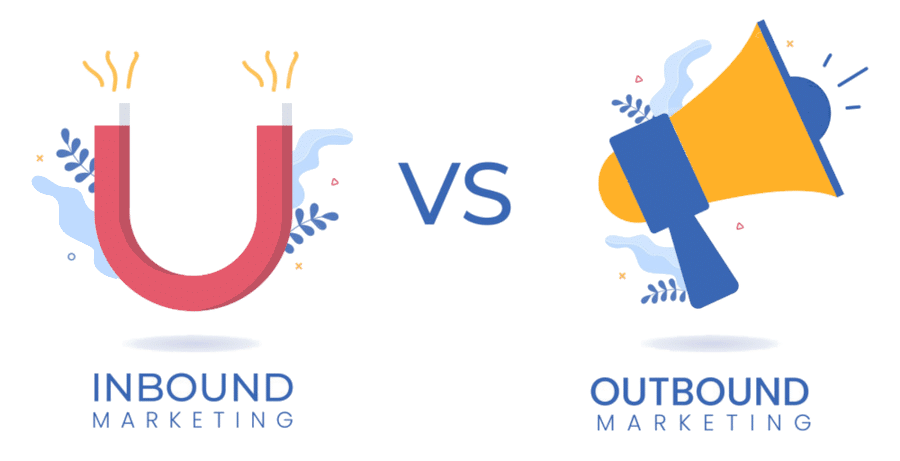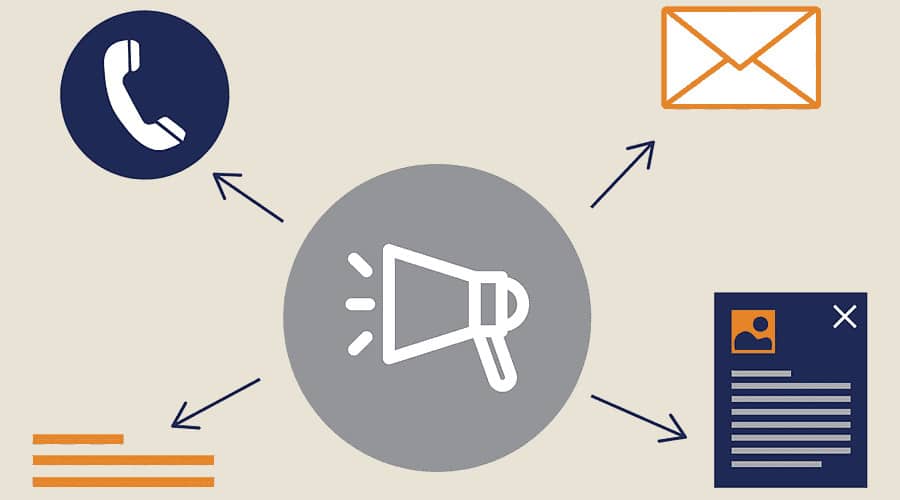Nobody likes to receive a phone call from a sales representative. Yet everyone loves to buy a product or service that meets their needs or desires. This is where the subtlety lies between the success and failure of an outbound strategy. Necessary for the majority of companies to attract new customers, its proper implementation can multiply an organisation's results. This article explains the definition of outbound marketing, its benefits and the different levers associated with it.
Definition of Outbound Marketing
Outbound marketing is a marketing strategy that involves pushing your services or products towards your target audience to attract new customers. This strategy is also known as push marketing, as the company pushes its products towards its audience.
This technical term actually refers to advertising methods that are familiar to everyone. These can include television advertisements, posters on billboards or bus shelters, email campaigns, telephone calls and many others. Outbound marketing is often seen as the opposite of inbound marketing, a more recent strategy which involves attracting potential customers organically.
The benefits of outbound marketing
Outbound marketing can offer many advantages for businesses. By distributing advertising messages widely, companies can reach a large audience, which can generate leads more quickly than with an inbound marketing strategy.
In addition, outbound marketing campaigns allow companies to vary their communication channels and adopt a more diversified approach to reach a wider audience. This type of method can be quickly put in place: sending prospecting emails or making telephone calls to prospective customers. It also makes it possible to test new offers or products while limiting the associated expenditure. Direct feedback means that interest in the new offer can be confirmed quickly.
💡Related articles:
Marketing Outbound vs. Marketing Inbound

Today’s businesses can choose between two main marketing strategies: inbound marketing and outbound marketing. Inbound marketing, also known as pull marketing, is about attracting customers to your business. It involves implementing a strategy of creating content with high added value for potential customers, so that they take an organic interest in the company.
Outbound marketing, on the other hand, involves using direct communication channels such as traditional advertising and marketing campaigns. Both strategies have their advantages, but outbound marketing is generally considered to be a faster option for generating leads and increasing sales. Inbound marketing is a long-term strategy for acquiring new customers without an advertising budget and for building a strong relationship with customers.
The main levers of Outbound Marketing
As explained above, Outbound Marketing refers to all the methods used by a company to push its products or services in front of the eyes of their ideal customers. This can involve a number of channels.
Traditional and digital marketing campaigns
Marketing campaigns can be divided into two main categories: traditional advertising and digital marketing. Examples of traditional advertising include television commercials and print advertisements in newspapers or magazines. Although these means of advertising are more expensive than email or inbound marketing campaigns, they can still be very effective in reaching a large audience.
Digital marketing campaigns include advertising platforms such as Facebook Ads, Google Ads, Display Ads (banner ads on certain websites) and sponsored content on LinkedIn. They have the advantage of making it easier to promote products with a lower budget than traditional campaigns, with more optimised performance measurements.
Email marketing
Prospecting can sometimes seem intrusive. But with excellent targeting, it brings value to both the prospect and the company. The most important thing about email prospecting is not necessarily to make a sale: it’s precisely by making a direct promotion that you fall into the category of intrusive people. On the other hand, a prospecting email that is genuinely interested in the prospect and in creating a relationship can lead to opportunities.
Telephone campaigns
Telephone campaigns are a more direct outbound marketing strategy for reaching potential customers. Although they are not very popular because of the context of telephone spam, they can be effective when approached in a targeted way, with a good knowledge of the target audience and the context.

Conclusion
Outbound marketing is still an effective way for companies to reach their target audience and generate qualified leads. Canvassing and digital marketing enable companies to obtain a rapid return on their offers, without requiring an extravagant budget. The main levers are prospecting by email and telephone, and advertising in all its forms.










